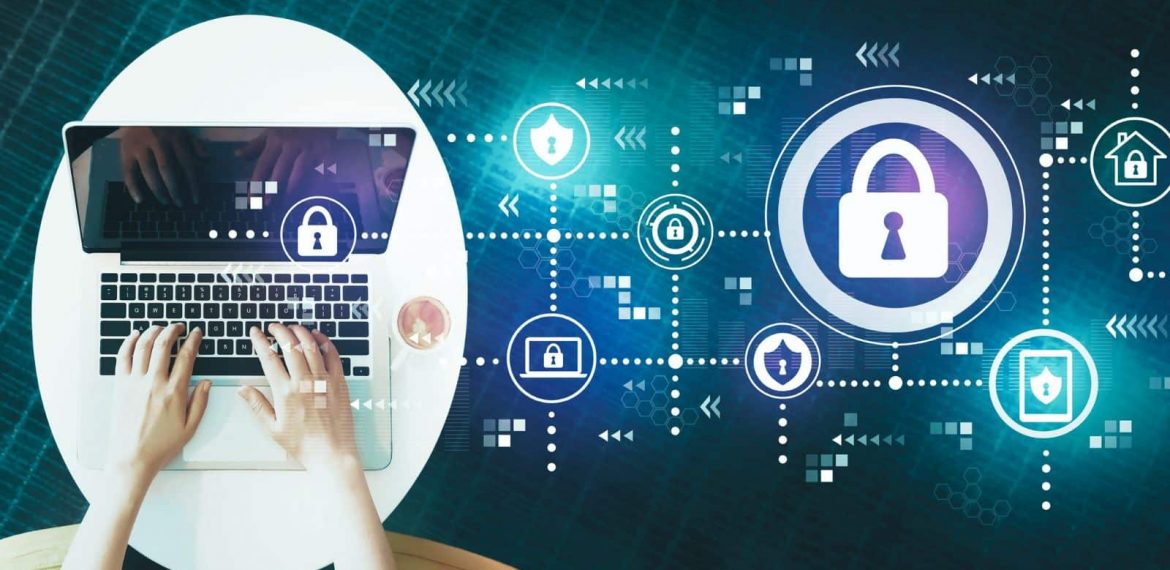Introduction to Cybersecurity for Software Services
Protecting your software services from cyber threats is more crucial now than ever before. With the rise of digital interconnectedness, businesses are increasingly vulnerable to hackers and malicious attacks. Cybersecurity has become a top priority for organizations across all industries, as any breach in security can lead to devastating consequences such as data breaches, financial losses, and damage to reputation.
In this blog post, we will explore the world of cybersecurity solutions specifically tailored for software services. We will delve into common threats and risks faced by software services providers and highlight effective strategies to safeguard your systems against potential attacks.
So whether you’re a small startup or an established enterprise offering software solutions, read on to discover how you can fortify your defenses with robust cybersecurity measures that keep both your clients’ and your own sensitive information secure. Let’s dive in!
Common Cybersecurity Threats and Risks for Software Services
Cybersecurity threats and risks are a constant concern for software services. In today’s digital world, where technology is at the heart of business operations, it has become imperative to protect sensitive data from malicious attacks. Let’s explore some common cybersecurity threats and risks that software services face.
One of the most prevalent threats is malware. Malicious software can infiltrate systems through various means, such as email attachments or infected websites. Once inside, malware can wreak havoc by stealing data or causing system-wide disruptions.
Another significant risk is phishing attacks. In these scenarios, attackers disguise themselves as trustworthy entities and trick users into divulging confidential information like passwords or credit card details. Phishing emails often appear legitimate and convincing, making it easier for unsuspecting individuals to fall victim.
Data breaches are also a major concern for software services. These occur when unauthorized individuals gain access to sensitive data stored within a company’s systems. The consequences of a data breach can be severe – not only financially but also in terms of reputational damage.
Social engineering tactics remain a persistent risk factor for software services’ cybersecurity efforts. Attackers exploit human vulnerabilities by manipulating employees into revealing sensitive information or granting unauthorized access.
To mitigate these threats and risks effectively, software services must adopt robust cybersecurity solutions tailored to their specific needs while staying updated with the latest security trends and best practices.
Top Cybersecurity Solutions for Software Services
In today’s digital age, cybersecurity has become more important than ever. With the increasing number of cyber threats and risks, software services need to implement robust security measures to protect their sensitive data and ensure the trust of their clients.
One of the top cybersecurity solutions for software services is implementing a multi-layered defense strategy. This involves using a combination of firewalls, intrusion detection systems, and antivirus software to guard against various types of attacks.
Encryption is another crucial aspect of cybersecurity. By encrypting data both at rest and in transit, software services can prevent unauthorized access and maintain the confidentiality of their information.
Regularly updating software applications is essential for staying protected against new vulnerabilities that hackers may exploit. Patch management systems help automate this process by identifying outdated or vulnerable components and applying necessary updates promptly.
Implementing strong user authentication mechanisms such as two-factor authentication adds an extra layer of security by requiring users to provide multiple forms of identification before accessing sensitive information or performing critical actions.
Educating employees about cybersecurity best practices is vital in preventing human error-related breaches. Training programs should cover topics such as phishing awareness, password hygiene, social engineering tactics, and safe browsing habits.
By implementing these top cybersecurity solutions along with ongoing monitoring and incident response protocols, software services can significantly reduce the risk posed by cyber threats while maintaining a secure environment for themselves and their clients’ data
Importance of Regular Security Audits and Updates
Regular security audits and updates are crucial for ensuring the ongoing protection of software services against cyber threats. These proactive measures help to identify any vulnerabilities or weaknesses in the system, allowing for timely remediation before they can be exploited by malicious actors.
By conducting regular security audits, organizations can assess their current cybersecurity infrastructure and protocols. This involves reviewing access controls, network configurations, encryption methods, and overall compliance with industry standards. It also provides an opportunity to evaluate employee awareness and adherence to security policies.
Updates play a vital role in maintaining strong cybersecurity defenses. Software vendors frequently release patches and updates to address newly discovered vulnerabilities or enhance existing security features. Failing to keep software applications up-to-date leaves them susceptible to known exploits that cybercriminals may target.
The importance of regular security audits and updates cannot be overstated when it comes to safeguarding software services from evolving cyber threats. Neglecting these essential practices increases the risk of data breaches, unauthorized access, financial loss, reputational damage, and legal repercussions.
To ensure effective implementation of these measures, organizations should establish robust processes for monitoring new threats and vulnerabilities regularly. They should also provide adequate training for employees on best practices for maintaining a secure digital environment.
Best Practices for Implementing and Maintaining Cybersecurity in Software Services
When it comes to cybersecurity, software services need to be proactive. Here are some best practices that can help in implementing and maintaining strong cybersecurity measures:
Develop a Comprehensive Security Plan: Start by assessing your organization’s vulnerabilities and creating a detailed security plan tailored to your specific needs. This plan should include guidelines for data encryption, access controls, network security, and incident response.
Regularly Update Software: Keep all software applications up to date with the latest security patches and updates. Outdated software can have vulnerabilities that hackers can exploit.
Use Strong Authentication Methods: Implement multi-factor authentication (MFA) wherever possible to add an extra layer of protection against unauthorized access. This could include using biometrics or tokens along with passwords.
Educate Employees on Security Awareness: Train employees on best practices for handling sensitive data, recognizing phishing attempts, and the importance of regular password changes. Employee awareness is crucial in preventing social engineering attacks.
Regularly Backup Data: Perform regular backups of critical data so you can recover it quickly if there is a breach or system failure.
Use Encryption Techniques: Encrypt sensitive data both at rest and during transmission to protect it from unauthorized access even if it falls into the wrong hands.
Implement Intrusion Detection Systems (IDS): IDS systems monitor network traffic for suspicious activity or potential threats 24/7 proactively alerting administrators about any anomalies detected
Conduct Regular Vulnerability Assessments & Penetration Testing: Regular vulnerability assessments identify weak points in your system while penetration testing helps simulate real-world attacks to evaluate their impact on your infrastructure’s defenses
By following these best practices diligently, software services companies can significantly reduce their risk of cyber-attacks! Remember that staying one step ahead is essential when it comes to protecting valuable assets from sophisticated threats!
Case Studies: Successful Implementation of Cybersecurity in Software Services
Now that we have discussed the importance of cybersecurity for software services and explored various solutions and best practices, let’s take a look at some real-life case studies that demonstrate successful implementation of cybersecurity measures.
Case Study 1: Company XYZ
Company XYZ is a leading software development firm that specializes in creating web-based applications for businesses. They recognized the increasing need to protect their clients’ sensitive data from cyber threats. To address this, they implemented a multi-layered approach to cybersecurity.
They conducted regular security audits to identify vulnerabilities in their systems. They then deployed robust firewalls, intrusion detection systems, and encryption technologies to safeguard against external attacks. Additionally, employee training programs were introduced to raise awareness about phishing attempts and other social engineering tactics.
As a result of these measures, Company XYZ experienced zero major security breaches over the course of two years. Their clients felt confident knowing that their data was being protected with state-of-the-art cybersecurity solutions.
Case Study 2: Startup ABC
Startup ABC is an up-and-coming software-as-a-service (SaaS) provider offering cloud-based productivity tools. Recognizing the potential risks associated with storing customer data on remote servers, they prioritized building strong security foundations right from the start.
They employed cutting-edge authentication mechanisms such as two-factor authentication (2FA) and biometric verification to ensure only authorized users could access their platform. Regular penetration testing helped them identify vulnerabilities early on and patch them promptly.
Furthermore, Startup ABC leveraged secure coding practices throughout their development process by adhering to industry standards like OWASP Top Ten Project guidelines. This proactive approach minimized the risk of introducing exploitable vulnerabilities into their software products.
Thanks to these comprehensive security measures, Startup ABC gained trust among customers who valued privacy protection and saw significant growth within its target market segment.




